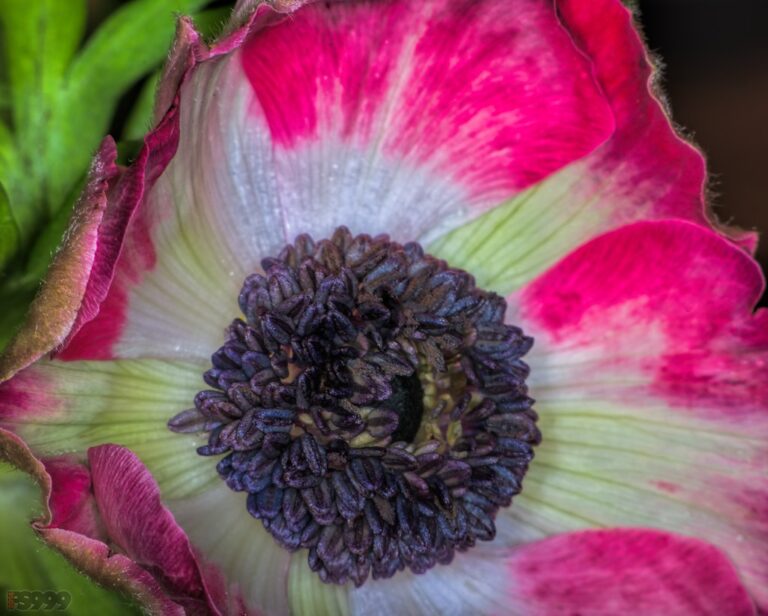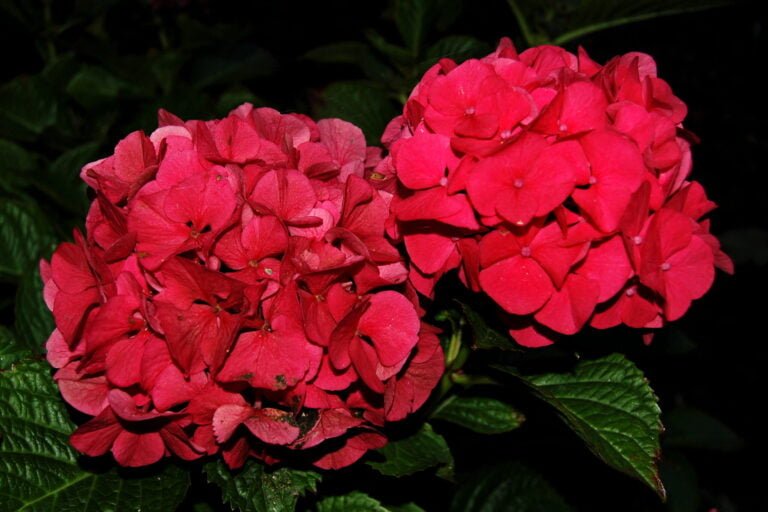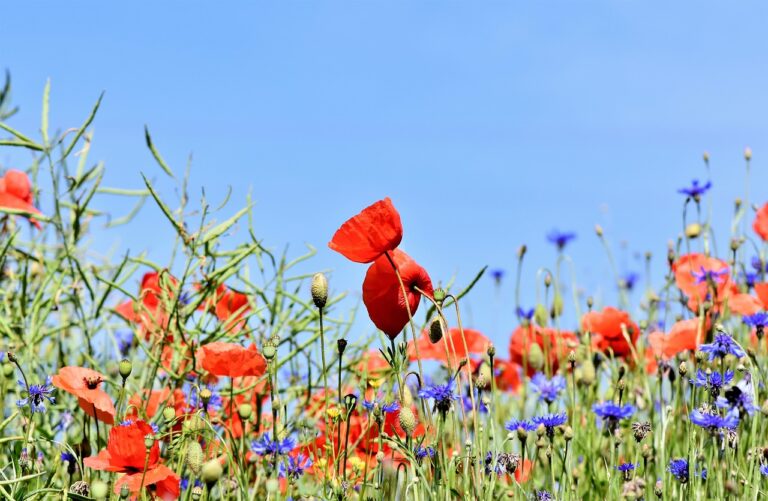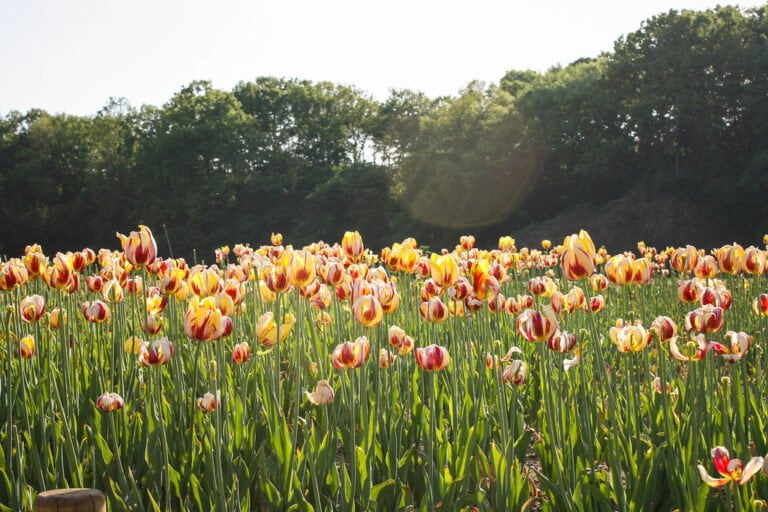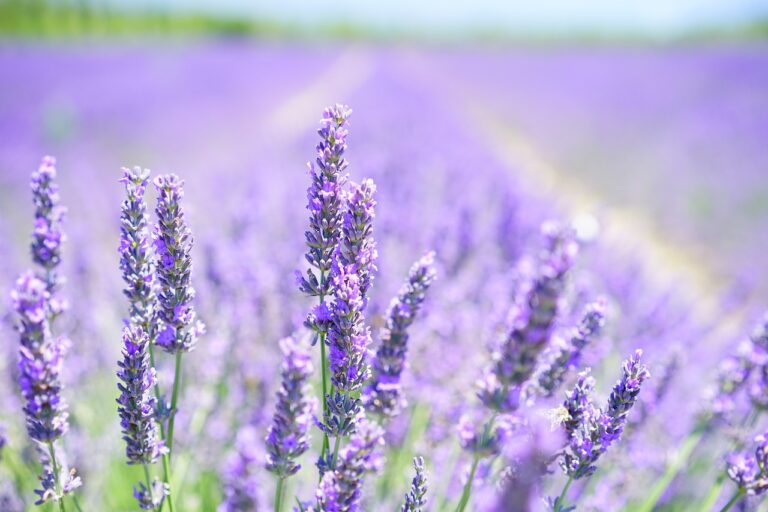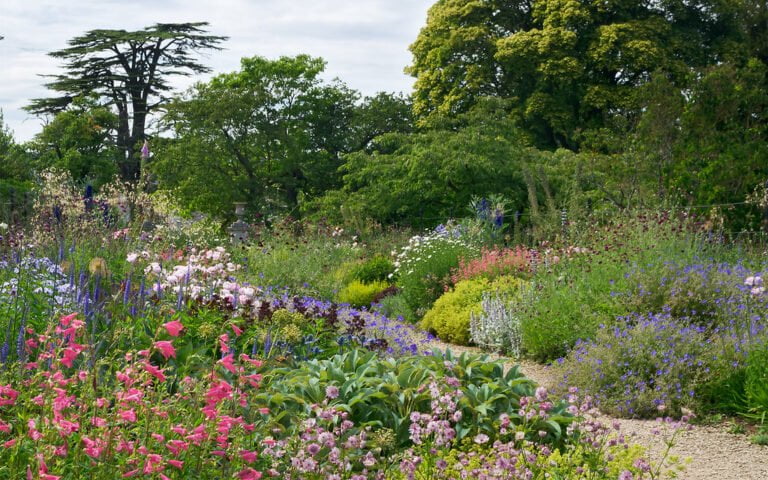Water-Saving Flower Gardening: Choosing Drought-Tolerant Flowers and Strategies
I’ll help you save water in your garden with drought-tolerant flowers. Choose native varieties like Lavender and Zinnias. Succulents such as Aloe Vera thrive with little water. Consider Mediterranean plants like Rosemary. Use efficient irrigation like drip systems to reduce waste. Mulch is key – it retains moisture and prevents evaporation. Remember to water deeply but infrequently. For more in-depth strategies on water-saving flower gardening, delve further into maximizing water conservation with mulch and creative water collection methods.
Benefits of Drought-Tolerant Flowers
Drought-tolerant flowers offer a practical solution for reducing water consumption in gardens while requiring minimal maintenance. These water-saving plants are a boon for those looking to conserve water and time without compromising on the beauty of their landscape. In regions prone to dry spells and hot weather conditions, these flowers stand resilient, needing less irrigation to thrive. Their ability to survive in arid climates makes them a valuable addition to any garden seeking sustainable practices and water conservation.
The vibrant blooms of drought-tolerant flowers add a pop of color to the landscape, creating an oasis of beauty even in the midst of challenging environmental conditions. Their low maintenance nature means less time spent watering and tending to the garden, allowing for a more relaxed gardening experience. By selecting these hardy plants, gardeners can enjoy a visually stunning yard while contributing to water conservation efforts.
Incorporating drought-tolerant flowers into the garden not only benefits the environment but also the gardener, providing a sustainable and aesthetically pleasing solution for landscaping needs. By choosing these plants, one can create a thriving garden that not only survives but thrives in harsh conditions, bringing joy and color to outdoor spaces with minimal effort.
Selecting the Right Flower Varieties
When selecting flower varieties for a water-saving garden, prioritize species like Lavender, Coneflowers, and Blanket Flower known for their drought-tolerant properties. Native flower varieties are also an excellent choice as they are adapted to your region’s climate and water availability. Succulents such as Sedum, Ice Plant, and Aloe Vera are perfect for low-water flower gardening due to their water-storing capabilities. Additionally, Mediterranean plants like Rosemary, Sage, and Thyme thrive in dry conditions, making them ideal for water-saving gardens.
- Opt for native flower varieties adapted to your region’s climate and water availability.
- Consider succulents such as Sedum, Ice Plant, and Aloe Vera for low-water flower gardening.
- Select Mediterranean plants like Rosemary, Sage, and Thyme that thrive in dry conditions.
- Incorporate drought-tolerant annuals like Zinnias, Marigolds, and Portulaca for colorful blooms with minimal water needs.
Implementing Water-Saving Irrigation Techniques
To enhance water conservation in flower gardening, implementing efficient irrigation techniques is crucial for reducing water usage and maintaining plant health. Drip irrigation systems offer a practical solution, as they can decrease water consumption by up to 30% in flower gardens. Pairing drip irrigation with automatic controllers guarantees that watering schedules are optimized for maximum efficiency, providing plants with the right amount of water at the right time.
Incorporating mulch and ground covers into the garden can further boost water conservation efforts. Mulch helps retain moisture in the soil, reducing evaporation rates and keeping plants hydrated for longer periods. Ground covers act as a natural barrier, preventing water runoff and promoting water absorption by plants’ roots.
When designing a water-saving flower garden, consider incorporating hardscape elements strategically. Hardscape design can help manage water runoff effectively, directing water where it is needed most and preventing wastage. By combining drip irrigation, automatic controllers, mulch, ground covers, and hardscape design, flower gardeners can create a sustainable and water-efficient environment for their plants to thrive.
Maximizing Water Conservation With Mulch
Mulch plays a crucial role in maximizing water conservation efforts in flower gardening by effectively retaining soil moisture and reducing evaporation rates. When applied correctly, mulch can greatly benefit the garden in several ways:
- Retain Soil Moisture: Mulch helps to lock in moisture in the soil, reducing the need for frequent watering and ensuring that plants have a constant water supply.
- Reduce Water Usage: By decreasing evaporation rates and maintaining soil moisture levels, mulch can slash water usage in gardens by up to 50%, making it a valuable tool for water conservation.
- Regulate Soil Temperature: Mulch acts as a natural insulator, regulating soil temperature by keeping it cooler in hot weather and warmer in cool weather, creating a stable environment for plant roots.
- Suppress Weed Growth: A layer of mulch helps to inhibit weed growth by blocking sunlight and preventing weed seeds from germinating. This not only conserves water for the desired plants but also reduces the need for manual weeding, saving time and effort.
Using organic mulch materials like bark, compost, or straw further enriches its benefits as they decompose, enriching the soil with essential nutrients over time. Incorporating mulch into your gardening routine is a practical and effective way to conserve water while creating an ideal environment for your plants to thrive.
Creative Water Collection and Reuse Methods
Implementing creative water collection and reuse methods is essential for maximizing water efficiency in gardening practices. Rain barrels are a practical way to collect rainwater, with the potential to gather up to 1,300 gallons annually from a 1,000 square foot roof. Greywater systems offer another innovative solution by recycling 50-80% of household wastewater for use in irrigation, reducing the demand for fresh water. Incorporating low-flow shower heads into homes not only conserves water but can also save up to 2,900 gallons per person each year, contributing to overall water efficiency. Drip irrigation systems are highly efficient in delivering water directly to plant roots, reducing water usage by as much as 60% compared to traditional sprinkler systems. These methods not only promote efficient water usage but also have positive effects on the environment by reducing the overall water footprint and minimizing water wastage.
Enhancing Garden Beauty With Drought-Tolerant Plants
Drought-resistant plants, such as lively succulents and resilient cacti, offer a pop of color and distinct textures to the garden landscape. Their varied shapes and sizes provide visual interest while needing minimal water, making them outstanding low-maintenance choices. By choosing these eco-friendly alternatives, gardeners can design striking, eco-conscious spaces that save water and promote biodiversity.
Colorful Drought-Tolerant Blooms
Improving garden beauty with colorful drought-resistant blooms involves selecting vibrant flowers like Gazania, Marigold, and Zinnia that require minimal watering for optimal growth.
- Drought-resistant blooms offer vivid colors and visual appeal.
- These flowers require less water, perfect for water-conserving gardening.
- Choosing drought-resistant blooms allows for colorful displays while preserving water.
- Planting colorful drought-resistant flowers enhances garden beauty sustainably.
Low-Maintenance Water-Wise Flowers
Incorporating low-maintenance water-wise flowers into your garden design can greatly reduce the need for frequent watering while enriching its beauty with drought-tolerant plants. Selecting the right plants like lavender, yarrow, and sedum, which possess deep root systems, allows for less water usage due to their low water requirement. Deep watering encourages plants to establish deep root systems that efficiently access soil moisture, further reducing the need for watering. Native plants are excellent choices as they are naturally adapted to local conditions, conserving water and thriving in dry environments. By incorporating these drought-tolerant plants, you can create a vibrant and sustainable garden that not only enriches beauty but also minimizes water usage for a more resilient landscape.
Practical Tips for Drought Gardening Success
To achieve success in drought gardening, it is crucial to stick to a proper watering frequency guide and take advantage of mulching benefits. Deep watering promotes the development of sturdy root systems for plants that can withstand dry conditions. By following these practical tips, gardeners can guarantee their drought-tolerant plants thrive even in water-scarce environments.
Watering Frequency Guide
Drought-resistant flowers typically require watering once a week to guarantee ideal growth and health. To guarantee proper watering frequency for drought-tolerant plants, consider factors like deep root growth, soil moisture, plant type, and weather conditions. Here are some practical tips for watering your drought-tolerant garden effectively:
- Water deeply and infrequently to promote deep root growth.
- Adjust watering based on plant type, soil composition, and weather conditions.
- Use a moisture meter to determine when watering is necessary.
- Implement mulch around plants to retain soil moisture and reduce watering frequency.
Mulching Benefits
Mulching plays a significant role in promoting drought gardening success by conserving soil moisture and reducing water usage. By applying mulch, moisture retention in the soil is improved, decreasing the frequency of watering needed for plants. The mulch layer acts as a protective barrier, reducing water evaporation from the soil surface. Additionally, mulch helps regulate soil temperature, keeping plant roots cooler during hot weather conditions. Furthermore, the use of mulch around plants suppresses weed growth, ensuring that water is conserved for the intended plants. Overall, proper mulching techniques play an important role in water conservation efforts in gardens, contributing to the success of drought gardening and the thriving of drought-tolerant flowers.

